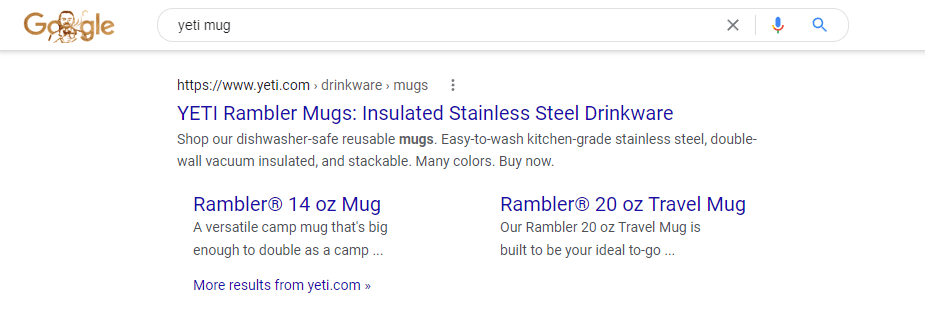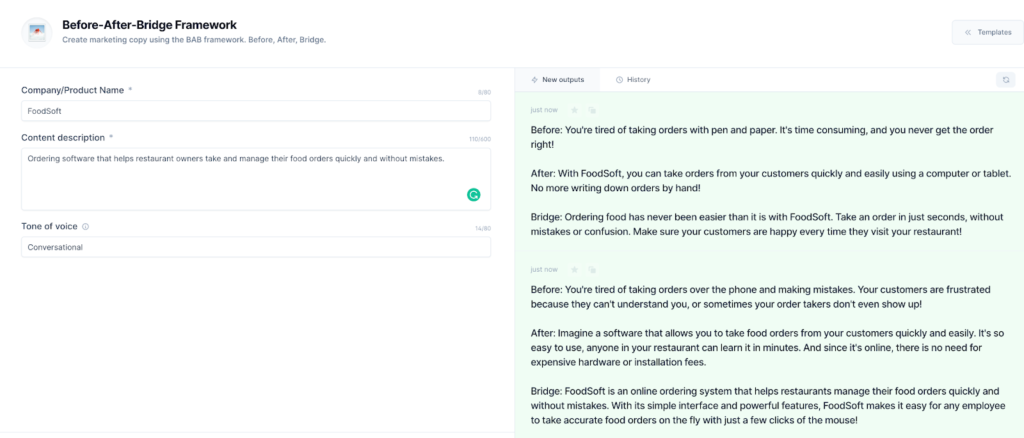Free
7 SEO Copywriting Tips And 3 Tools To Help You Rank Better
Want to create copy that drives leads and sales? Check out these 7 SEO copywriting tips and 3 helpful tools to help you rank better.
When you’re looking to buy something, where do you turn? Chances are, your favorite search engine. With over 3.5 million searches per day and 1.2 trillion per year, search engines like Google are crucial for modern consumers.
That’s why search engine optimization (SEO) is essential for marketers. And SEO copywriting plays a big role in that.
So what exactly is SEO copywriting?
It’s the process of creating marketing copy that’s optimized for search engines. The goal is to drive organic traffic to your website and convert that traffic into leads and sales. But it’s important to strike a balance between writing for search engines and writing for the human reader.
But wait, what’s the difference between SEO copywriting and SEO content writing? While both involve generating organic traffic from search engines, the primary goal of SEO copywriting is to convert that traffic into leads and sales. On the other hand, SEO content writing focuses solely on generating organic traffic.
Both types of writing are important for your content marketing strategy, and it’s crucial to understand the difference and how to leverage them effectively.
Master SEO copywriting with these 7 tips for success (complete with examples!)
If you’re new to SEO copywriting, don’t worry! We’ve got you covered with these 7 essential tips to help you get started and achieve success:
1. Nail your keyword research
Keyword research is the backbone of any effective SEO strategy. While it may seem daunting, there are tools available to simplify the process. Begin by compiling a list of search terms you think your target audience would use to find your products or services online. Remember to include long-tail keywords and questions to optimize your content creation.
Make sure to consider search intent when conducting your keyword research. Different users are looking for different things. For instance, someone starting their research may have an informational intent, while someone ready to purchase may have a transactional intent.
2. Optimize your header and title tag
Your metadata plays a crucial role in your search engine ranking. Metadata includes your header, title tag, and meta description. The header (or H1) is like the subject line of your webpage, while the title tag tells search engines what your page is about. The meta description, though less important for ranking, is vital for attracting clicks from search results.

Follow these best practices for metadata:
– Keep your title tag within 55 characters, including the keyword or phrase.
– Write a compelling meta description that includes the keywords.
– Limit the meta description to 150-160 characters, and avoid using quotes or non-alpha characters.
– Use your target keyword phrase in the H1 tag.
– Utilize H2 tags for different sections of your content.
– Avoid duplicate title tags, headers, and meta descriptions.
3. Create copy that flows naturally
While it’s crucial to include keywords in your SEO copy, it’s equally important to write content that engages and inspires action from your audience. Focus on quality and readability, using keywords naturally throughout your content. Avoid cramming them into sentences or paragraphs where they don’t fit. Remember, it’s the humans who are ultimately making the purchasing decisions, so your content needs to resonate with them.

Take a look at the Liftoff Creator Course sales page for an example of effectively incorporating keywords without sacrificing the main message.
4. Don’t forget your calls to action (CTAs)
At the end of the day, the goal of SEO copywriting is to drive leads and sales. Including a clear and actionable call-to-action (CTA) is essential. In fact, you may need multiple CTAs to guide readers to the next step, whether that’s becoming a lead or making a purchase.
Make sure your CTA text is specific and leaves no room for confusion. Instead of a generic “contact us,” opt for a more direct approach like “Email our onboarding team to get started.” Additionally, ensure that your CTA includes a link that takes customers to the next step. The easier it is for them to proceed, the more likely they are to follow through.
Check out the Storespark landing page for inspiration on effective CTAs.
5. Boost your SEO with links!
Want to optimize your on-page SEO? Don’t forget about the power of linking! When you include both internal links to relevant pages on your site and external links to high-quality content, search engines take notice. By providing searchers with valuable information, you not only improve your chances of ranking higher on search engine results pages (SERPs), but you also attract backlinks from other sites. The more high-quality pages that link back to your content, the more valuable it becomes.
Just remember to choose external pages with great content and make sure they open in a new tab, so your readers stay focused on your fabulous copy!
6. Create a stellar user experience!
When writing copy, put your audience first. Consider their needs, goals, and understanding of your topic. Make your copy easy to read, navigate, and digest. Break up the text with white space, headings, subheadings, bullet points, and media to keep it engaging. Take a cue from Postaside’s simple landing page, using straightforward language, addressing pain points, and incorporating visual elements.
The more relevant and user-friendly your copy, the longer your audience will stick around. And that’s a good sign for search engines like Google, who determine your search result rankings.
7. Elevate your content quality!
Sure, analyzing top-ranking pages is essential, but don’t stop there. Stand out from the competition by going the extra mile. Fill in topic gaps with in-depth coverage. Boost your credibility by quoting experts. Make your copy more impactful with charts, images, and videos. Conduct original research to establish authority and earn valuable backlinks. By providing even more value to searchers, you’ll increase your chances of ranking above the rest.
Save time and energy with these 3 amazing SEO copywriting tools! Take your optimization to the next level without adding extra hours to your workweek.
1. Jasper: The ultimate AI-powered writing tool that takes care of your SEO copywriting. Choose from various templates and watch Jasper guide you step-by-step through creating effective content. With Boss Mode, you can use multiple copywriting skills in the same document, making SEO copy creation a breeze.

2. Surfer: An AI-driven SEO tool that helps you plan, create, and optimize your SEO copy. The content editor gives real-time suggestions for optimizing your content, while the content planner generates a strategy within minutes. Discover new keyword opportunities and align your keyword phrases with user intent. Plus, integrate Surfer with Jasper for even better optimization as you write.
3. BuzzSumo: Find trending topics in your industry with this powerful tool. Discover popular content and identify new topics to capitalize on. Analyze billions of articles and social media posts to stay ahead of the game. See what’s popular now and even dive into content performance data from the past 5 years.
Ready to create search-optimized copy at scale? Jasper is your go-to tool! Sign up now to experience the time-saving magic of Jasper.






























